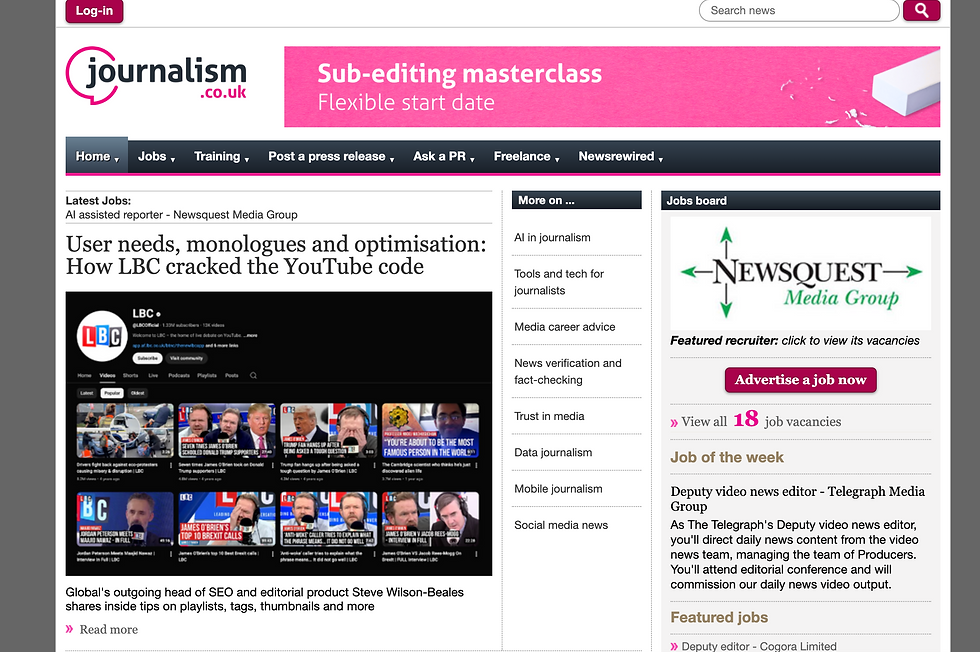The Fake News Piñata
- Steven Wilson-Beales

- Dec 8, 2016
- 4 min read
Since the US Elections we’ve read a lot about the topic of fake news and how journalism must adapt to ‘regain’ credibility and trust. I’m sure the debate will go on for some time, but in the meantime I thought it might be useful to gather all the different opinions I’ve read over recent weeks in one place. Ladies and gentlemen, I present to you the Fake News Piñata!
From what I can see, this very special piñata is basically spit into three segments – publishers, platforms and people. I apologies in advance for the crude nature of what follows, this list is by no means exhaustive and I’m pretty certain to have over-simplified in places. But for now…
Publishers
We need to fight fake news with facts.
We need to fight fake news with facts that are shareable.
We need to fight fake news with facts, opinion and razor-sharp attention to the language we use.
Facts don’t matter because audiences don’t ‘care’ – because they’ve been told journalists are experts and experts are not to be trusted. Journalists need to work harder to communicate the benefits of what they do.
Facts don’t matter because audiences have been told journalists are biased (whereas politicians are not). Journalists need to work harder to communicate the benefits of what they do.
“Facts get shared, opinions get shrugs.” Alt-right institutions get more attention online now because their stories appear to be more fact-based than rant-based. They have the semblance of truth. Journalism needs to address this development through fact-checking services/teams to understand why fake news stories have become so shareable beyond outrageous headlines.
In the fight for ‘truthfulness’ publishers and journalists need to accept that they too make mistakes. Which is more damaging? A fake news story with a low audience or a slightly incorrect mainstream media story with a huge audience?
99% of all journalism is commercially funded. Go figure, we are all doomed.
Are non-profit journalist organisations more truthful?
Has the ‘pandering’ to Facebook (shareability over ‘substance’) backed us into a corner? Do we need to focus on new metrics of engagement which recognises quality journalism and can be monetised easily. Is this just a pipe dream or the start of a long journey of collaboration across the entire media sector?
As an industry we should stop theorising, navel-gazing and soul-searching and get down to proper journalism i.e holding those in power to account and getting out there into the local communities.
Hmm. We might need to invest more in local journalism…
Er, what exactly is Fake News? “Does a falsehood only become “fake news” when it shows up on a platform like Facebook as legitimate news?”
Platforms
Facebook should help by filtering out fake news and extreme, politically biased websites – it should be an arbiter of truth.
Facebook can never be an arbiter of truth because it is a commercial organisation.
Facebook can never be an arbiter of truth because it is a technological organisation. Technology has screwed up everything.
Facebook could suggest the perfect solution to fake news but this would never please the editorial community – because journalists and developers just don’t understand each other.
Does it really matter if Facebook has a fake news issue? They are also supporting credible news organisations who would have disappeared without it.
Why all this focus on Facebook all of a sudden? Google have been surfacing racist and sexiest websites since it started. Just do a search for….
People
Most people have a low level of media literacy. Blame lack of education and poverty.
Most people have a low level of media literacy. Blame the government.
Most people have a low level of media literacy. Blame the media.
Most people have a low level of media literacy. Blame technology.
Most people have a low level of media literacy. Blame procrastination.
People lack the critical capacity to recognise what might be fake because they actively seek reflections of themselves. Confirmation bias.
Facts don’t matter because we’re all basically selfish and can’t escape our prejudices.
I’ll leave it there for now, please feel free to add further points via the comments below. For those interested in what the journalist/tech community is doing right now to navigate this new landscape, may I suggest this excellent, collaborate resource initially recommended by Jeff Jarvis.
Further Reading Washington Post fake news story blurs the definition of fake news Google, democracy and the truth about internet search The tech/editorial culture clash The Man Who Made Radio Viral Facebook Shouldn’t Fact-Check Trump has already defeated the news media. And it’s unclear what we can do about it. Publishing in the post-truth era Parallel narratives FACEBOOK AND GOOGLE MAKE LIES AS PRETTY AS TRUTH The Cynical Gambit to Make ‘Fake News’ Meaningless Why Snapchat And Apple Don’t Have A Fake News Problem





































Comments